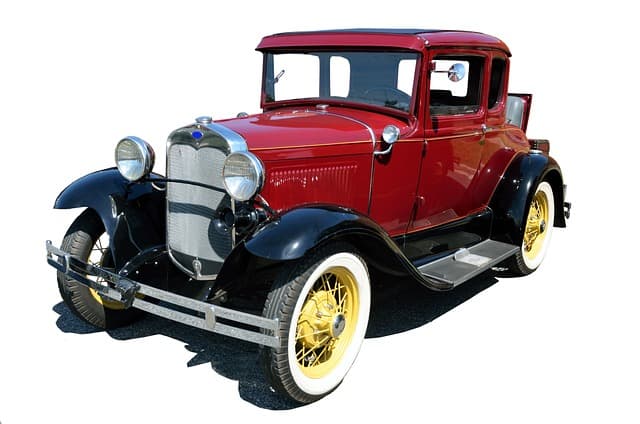Innovations in Automotive Technology: A Timeline of Transformative Advancements

The automotive industry has undergone a remarkable transformation over the years, driven by continuous innovations in technology. From the earliest mechanical breakthroughs to the cutting-edge advancements of today, vehicles have evolved not only in terms of design and performance but also in the integration of groundbreaking technologies. In this article, we will embark on a journey through time, exploring a timeline of key technological innovations in the automotive industry, ranging from crucial safety features to the ever-evolving world of in-car entertainment.
The Early Years: Mechanical Milestones (Late 19th Century – Early 20th Century)
The automotive timeline commences in the late 19th century with the invention of the automobile. Key mechanical innovations during this era include the introduction of the electric starter by Charles Kettering in 1912, replacing the dangerous hand-crank method. This development not only enhanced convenience but also significantly improved vehicle safety.
1930s – 1940s: The Rise of Streamlining and All-Steel Bodies
As vehicles became more prevalent, designers started focusing on aerodynamics. Streamlining became a buzzword in the 1930s, with automakers like Chrysler and Studebaker incorporating sleek designs to reduce drag. Additionally, the adoption of all-steel bodies in the 1930s improved both safety and durability, setting the stage for future innovations.
1950s – 1960s: The Seat Belt and Crumple Zone Era
In the 1950s, engineer Nils Bohlin introduced the three-point seat belt, a safety feature that would go on to save countless lives. Meanwhile, Mercedes-Benz pioneered the crumple zone concept in the 1950s, designed to absorb energy during a collision and minimize the impact on passengers. These safety innovations marked a paradigm shift in the automotive industry’s approach to occupant protection.
1970s – 1980s: Anti-lock Braking System (ABS) and Airbags
The 1970s witnessed the development of the Anti-lock Braking System (ABS), a technology that prevents wheel lockup during braking, improving steering control. This crucial safety feature became more widespread in the 1980s. Simultaneously, airbags, initially conceptualized in the 1950s, began to gain traction, becoming a standard safety feature in many vehicles by the late 1980s.

1990s – 2000s: Electronic Stability Control (ESC) and Advanced Driver Assistance Systems (ADAS)
The late 20th century and early 21st century brought about the integration of Electronic Stability Control (ESC), a technology that enhances vehicle stability by detecting and reducing skids. The 2000s also saw the emergence of Advanced Driver Assistance Systems (ADAS), encompassing features such as adaptive cruise control, lane departure warnings, and collision avoidance systems, foreshadowing the era of semi-autonomous driving.
2010s – Present: Electric Vehicles (EVs) and Autonomous Driving
In recent years, the automotive industry has witnessed a surge in electric vehicle adoption. Companies like Tesla have played a pivotal role in popularizing electric cars, offering not only environmental benefits but also pushing the boundaries of performance with innovations like Ludicrous Mode. Additionally, the dream of autonomous driving has moved from concept to reality, with companies testing and deploying self-driving technologies.
In-Car Entertainment: A Symphony of Technological Marvels
As vehicles evolved, so did the in-car experience. The history of in-car entertainment is a testament to the rapid pace of technological innovation. Radios became commonplace in the mid-20th century, followed by eight-track players and cassette decks. The 1980s saw the advent of compact discs (CDs), revolutionizing music playback in cars.
The 21st century ushered in a new era of in-car entertainment with the integration of touchscreens, GPS navigation systems, and Bluetooth connectivity. Smartphones became seamlessly integrated into vehicle infotainment systems, allowing for hands-free calling, music streaming, and real-time traffic updates.
Furthermore, the emergence of voice-activated assistants, like Apple’s Siri and Amazon’s Alexa, has redefined how drivers interact with their vehicles. These innovations not only enhance convenience but also contribute to a safer driving experience by minimizing distractions.
Conclusion:
The automotive industry’s journey through time is a story of relentless innovation, with each era marked by transformative technological advancements. From fundamental safety features to the integration of sophisticated in-car entertainment systems, vehicles have become more than just modes of transportation—they are showcases of cutting-edge technology. As we look toward the future, the automotive landscape promises even more exciting developments, from the widespread adoption of electric vehicles to the realization of fully autonomous driving. The timeline of automotive technology is a testament to human ingenuity and the drive to make each journey safer, more efficient, and, above all, technologically exhilarating.
